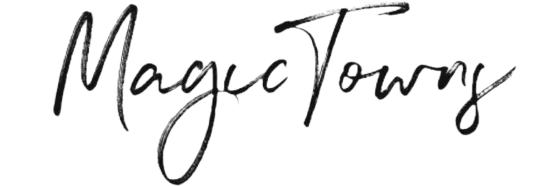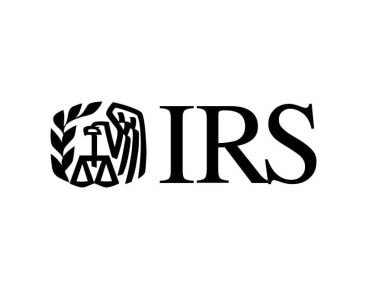Italy is an incredible country to be a resident in, but it comes with several financial challenges when you’re starting off. While there are tons of shopping malls, restaurants, and tours you can visit, there’s always a significant price tag attached to each of them. Basic utilities like electricity and gas are among the most expensive in the EU, and other expenses like rent aren’t any different.
As such, most expats try to set up a business or freelance service the moment they step into Italy. However, knowing when, where, and how to start can feel daunting, from choosing the right business structure to obtaining the necessary permits, handling taxes, and staying compliant with local regulations.
However, after some experience, I’ve shortlisted key legal and practical points any expat would want to know to secure a stable revenue stream. Here’s what to note.
How To Start A Business Or Freelance in Italy
Like any other country, you must provide several valid identification documents before getting recognized as a self-employed worker in Italy. Before opening a business, you must ensure you have the following documents:
- Passport
- Proof of accommodation
- Proof of financial resources
- Health insurance
- No criminal record certificate
- Qualifications and professional certifications
- Nulla Osta
- Codice Fiscale
- VAT number application
- Residence permit documents
- Bank account setup documents

Your passport, proof of accommodation, proof of financial resources, health insurance, no criminal record certificate, and qualifications and professional certifications are all key prerequisites. You can receive your other documents through the steps below.
Apply For Null Osta And/Or Codice Fiscale
For non-EU citizens, obtaining a self-employment visa is essential for legally freelancing in Italy. This visa is valid for two years and can be renewed, and it’s better to always visit the same office where you apply for it.
The first thing to note is whether your profession is regulated or not. Non-regulated professions, like freelance writing or translating, don’t require formal qualifications, and the documentation is provided by the Chamber of Commerce.
On the other hand, regulated professions, like lawyers or engineers, require qualifications and coordination with professional bodies. If you fall into the latter category, you must get the necessary paperwork from your respective governing body in Italy (like Ordine degli Architetti for architects.)
The next step is getting your Nulla Osta and Codice Fiscale. Italy’s immigration policy, Decreto Flussi, sets quotas for workers. This opens unpredictably each year, so keep an eye on announcements. Once open, request your Nulla Osta at the local police headquarters with documents like:
- Passport copy
- Proof of accommodation
- Clearance from the Chamber of Commerce or a professional body
Check out: Your Guide to Getting a Codice Fiscale in Italy
If you’re an EU citizen, you likely don’t need a Nulla Osta, but you will need an Italian codice fiscale (or Tax Code). This can be obtained at any local Agenzia delle Entrate or potentially online by emailing the necessary form.
For a solo business, the simplest and most affordable option is to open a partita IVA. Under the regime forfettario, taxes are lower: 5% for the first 5 years and 15% after that, provided your income is under €85,000 annually. However, total taxation, including social security (INPS), can reach around 50%.
With regime forfettario, costs aren’t deductible. Instead, a predefined profitability coefficient determines taxable income. Some websites like Lexdo.it and Fiscozen.it offers partita IVA setup services, but hiring an Italian accountant (commercialista) is recommended for smoother management. Other legal structures, like an SRL, allow for shareholders and limit personal liability but are more expensive and complex to set up.
Get Your Self-Employment Visa And Residence Permit

Within three months of receiving your Nulla Osta, submit your visa application at the Italian embassy or consulate in your country with:
- Completed application form
- Passport-sized photos
- Valid travel document
- Proof of income, accommodation, and health insurance
If approved, you’ll receive your self-employment visa within weeks. Additionally, non-EU citizens must apply for a permesso di soggiorno within eight days of arriving in Italy. This is done by submitting a postal kit available at a Sportello Amico counter in local post offices. The required documents are typically the same as those submitted for the visa application.
After submitting your application, you’ll receive an appointment at the local police station (Questura), where they’ll collect your fingerprints. Your permit will be issued shortly after.
EU citizens staying over three months must register with the local Ufficio Anagrafe. Non-EU citizens, however, must submit their documents via a postal kit at a Sportello Amico counter. Fortunately, the documents you’ll need to get the permit are the same as your visa, which are listed above.
Once you submit your application, the office has up to 45 days to verify and approve your residency. If no objections are raised within this period, your residency is considered valid by default.
Register Your Business
Once you have your permit and fiscal code, it’s time to establish your business. Before starting, it’s important to note that EU residents must stay under 183 days without transferring their tax residency prior to registration. Non-EU residents, however, must define their complete business structure (sole proprietorship or freelancer) and register for VAT.
If you’re a non-EU resident, here’s how you can register your business depending on the structure:
- Sole Proprietorship: Apply via the ComUnica platform to register with your Italian Business Register, Social Security (INPS), and Accident Insurance (INAIL.)
- Freelancers: Apply for a VAT number through the Agenzia delle Entrate and register with the INPS or relevant professional body.
Open An Italian Bank Account
The last step involves opening a solid bank account to store your earnings. After your residency is approved, return to the Ufficio Anagrafe to apply for your carta d’identità. The process usually requires you to fill out a form, provide a passport-sized photo, and pay a small fee (around €20), after which the card is typically processed within a few days and delivered to your home.
Once you have your carta d’identità, you can open a bank account at an Italian bank. Most banks will require your Italian ID card, Codice Fiscale, Proof of Residency, and Proof of Finance.
Conclusion
Navigating through Italian bureaucracy can be tricky, especially with all the finicky requirements. However, it’s always advised to get informed in advance on the steps required if you plan to start a business or freelance in Italy. Depending on where you apply or which station you go to verify your identity, you sometimes won’t even need a permesso di soggiorno when opening up a business. Still, although it’s not normalized across the country, it’s better to be safe than sorry, and doing your due diligence ensures you’re always prepared for any random hurdles.
Sources
Good job! Please give your positive feedback
How could we improve this post? Please Help us.









